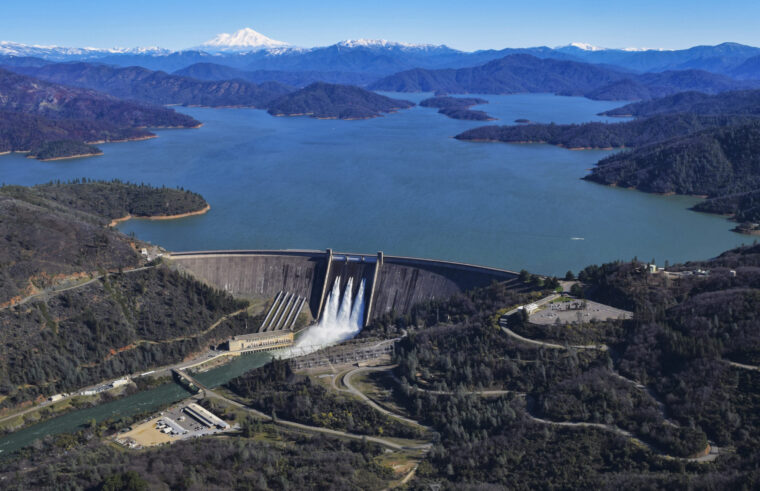
A major water infrastructure system in California has updated its operations to meet changing climate demands and protect critical wildlife. The U.S. Bureau of Reclamation has approved a comprehensive new operating plan for California’s Central Valley Project, which is the largest federal water management system in the nation and has been serving California’s agricultural heartland for over 80 years. The plan is designed to create more predictable water deliveries while protecting endangered fish species and improving drought resilience across the project’s vast network of dams, reservoirs and canals.
The updated framework introduces new operational criteria for several key components of the Central Valley Project (CVP), which extends 400 miles through California’s vast Central Valley from the Cascade Range in the north to the Tehachapi Mountains in the south. At the center of the changes is the revised management of Shasta Reservoir, the project’s largest facility with over 4.5 million acre-feet of storage capacity. These changes are designed to benefit migrating salmon populations and establish improved operational criteria for exporting water downstream.
RELATED: California report offers pathway to navigate possible water shortages
This overhaul comes at a critical time for a water system that supplies irrigation water to about one-third of California’s farmland — an area that produces more than one-third of the nation’s vegetables and two-thirds of its fruits and nuts. The CVP also provides drinking water to about 2.5 million people and supports a network of 19 national wildlife refuges across the Sacramento and San Joaquin Valleys.
“The completion of new operating rules for the Central Valley Project is the cornerstone of our efforts to address record drought and changing climate conditions in California,” said Reclamation Commissioner Camille Calimlim Touton, in a press release. She noted that the plan complements other major investments, including new water storage, capacity improvements, and groundwater recharge initiatives.
The plan represents three years of coordination between multiple agencies, including the California Department of Water Resources, U.S. Fish and Wildlife Service, National Marine Fisheries Service and California Department of Fish and Wildlife. Officials emphasized the plan’s focus on adaptive management, allowing operators to respond more quickly to changing conditions while maintaining environmental protections.
The new framework specifically addresses operations at Shasta Dam, which has been the keystone of the CVP since construction began in 1938. Changes to its operation will directly impact winter-run Chinook salmon, whose population at the Red Bluff Diversion Dam downstream has fallen to less than 5% of its 1969 levels.
For the California Department of Water Resources, the plan represents a shift toward more flexible management. “Extreme storms and extended droughts mean we need to be as nimble as possible in operating our water infrastructure,” said DWR Director Karla Nemeth, highlighting the plan’s emphasis on adaptive management strategies.
The plan also supports early implementation of the Healthy Rivers and Landscapes Program to provide more water outflow and habitat restoration in the Sacramento-San Joaquin Bay-Delta, where the CVP’s hub of canals and pumping stations moves water southward through the Delta-Mendota Canal and other facilities.
The U.S. Fish and Wildlife Service views the plan as part of a holistic approach to conservation. In a statement, Regional Director Paul Souza highlighted the interconnected nature of community health, agricultural success, and species conservation, noting that the plan represents “another important step forward to real-time adaptive management.”
Photo courtesy Bureau of Reclamation, CC BY-SA 2.0 https://creativecommons.org/licenses/by-sa/2.0, via Wikimedia Commons
The post Central Valley water plan seeks to prevent drought, protect salmon migration appeared first on Government Market News.
